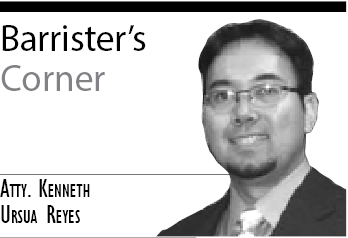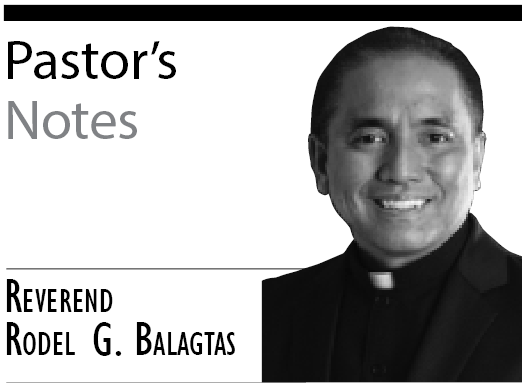COULD and should a person be imprisoned for “offending religious feelings?”
In the Philippines, it is possible. That is exactly what the judge ruled in a case filed by Monsignor Nestor Cerbo of the Manila Cathedral (Catholic Church vs Carlos Celdran) over Celdran’s violation of Article 133 of the Revised Penal Code.
On September 30, 2010, Carlos Celdran staged a protest against the Catholic Church for blocking the passage of the Reproductive Health (RH) Bill.
He went to the Manila Cathedral dressed as Filipino national hero, Jose Rizal.
Inside the cathedral and during an ecumenical service, Celdran shouted that the church should stop meddling in government affairs while holding a sign which read: “Damaso.”
The sign referred to “Padre Damaso,” the contravida priest in Dr. Jose Rizal’s novel, Noli Me Tangere.
This anticlerical was written by the national hero to expose the abuses of the Roman Catholic Church friars and the Spanish elite during the Spanish era in 19th century colonial Philippines.
In his ruling, Metropolitan Trial Court Branch 4 Judge Juan Bermejo Jr. stated: “Wherefore, premises considered, accused Carlos Celdran is found guilty beyond reasonable doubt for the crime of Offending Religious Feelings under Article 133 of the Revised Penal Code and applying the Indeterminate Sentence Law, there being no mitigating and aggravating circumstance, he is hereby sentenced to suffer imprisonment of two months and 21 days as minimum to one year, one month and 11 days…”
Article 133 of the Revised Penal Code stipulates: “Art. 133. Offending religious feelings. — The penalty of arresto mayor in its maximum period to prision correccional in its minimum period shall be imposed upon anyone who, in a place devoted to religious worship or during the celebration of any religious ceremony shall perform acts notoriously offensive to the feelings of the faithful.”
As soon as this ruling came out, a fiery debate ensued among kababayans in the Philippines.
Many question the constitutionality of Article 133 of the Revised Penal Code, arguing that it directly violates Sections 4 and 5 of the 1987 Philippine Constitution which states:
“Section 4. No law shall be passed abridging the freedom of speech, of expression, or of the press, or the right of the people peaceably to assemble and petition the government for redress of grievances.
Section 5. No law shall be made respecting an establishment of religion, or prohibiting the free exercise thereof. The free exercise and enjoyment of religious profession and worship, without discrimination or preference, shall forever be allowed. No religious test shall be required for the exercise of civil or political rights.”
As these provisions in the Philippine Constitution were patterned after the US Constitution, it is important to understand the spirit and intent of the law, as expressed by Thomas Jefferson: “I contemplate with sovereign reverence that act of the whole American people which declared that their legislature should ‘make no law respecting an establishment of religion, or prohibiting the free exercise thereof,’ thus building a wall of separation between Church & State.”
This would point to the “Establishment Clause” of the First Amendment of the US Constitution, the same prohibition found in the 1987 Philippine Constitution. “Congress shall make no law respecting an establishment of religion…” This is followed by “or prohibiting the free exercise thereof” — known as the “Free Exercise Clause.”
The Establishment Clause has generally been interpreted by legal experts to prohibit the establishment of a national religion by Congress, or the preference by the US government of one religion over another, notwithstanding the right to exercise religion or no religion at all.
Aside from the questions on the constitutionality of Article 133, kababayans who oppose the judge’s ruling also argue against the use of the clause “acts notoriously offensive to the feelings of the faithful.”
Who defines and who decides what is “notoriously offensive?”
Those critical of the Catholic Church contend that priests who sexually abuse minors should be the ones sent to prison, as such transgression is a far graver criminal offense than protesting inside the cathedral. The act of protest is protected by the “Freedom of Speech” clause of the Bill of Rights.
Others also wonder if people from other religion (even atheists) enjoy the same protection under the law.
And what about the secular groups or people? Can they also file a case against the Catholic Church, if they feel that their feelings are being offended by the religious institution?
Is there a counterpart of the law for the non-religious? If none, then isn’t this a clear violation of the clause, “No law shall be made respecting an establishment of religion,” in the Philippine Constitution?
Kababayans who support the complaint of the Catholic Church argue that no right is absolute, and that people should exercise their rights responsibly. They contend that the law just makes sure that exercising one’s right does not cross the line and offend other people — in this case, the religious feelings of Catholics.
They say Celdran could exercise his “freedom of speech,” but he should have chosen a better venue. Staging his protest IN the cathedral (which is a place of worship for Catholics) is a clear violation of Article 133.
Celdran said he would appeal against the court’s decision, arguing that this uncommonly-used law is a threat to freedom of speech.
“I am calm but I am going to fight this till the end,” Celdran posted on Twitter.
Do you think Carlos Celdran SHOULD go to prison for “offending religious feelings?”
* * *
Gel Santos Relos is the anchor of TFC’s “Balitang America.” Views and opinions expressed by the author in this column are are solely those of the author and not of Asian Journal and ABS-CBN-TFC. For comments, go to www.TheFil-AmPerspective.com, https://www.facebook.com/Gel.Santos.Relos




